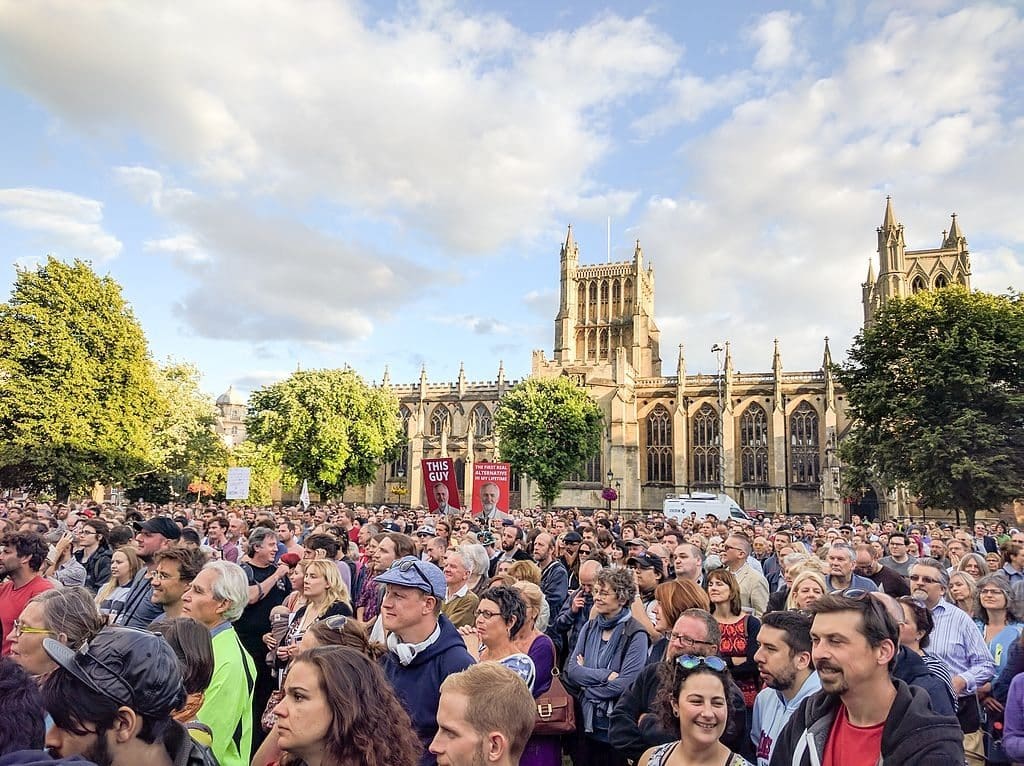THIS ARTICLE CONTAINS CONTENT THAT MAY UPSET THE READER
Terrible footage has emerged from Greece of the inside of a “centre” for disabled children and young adults. The film, which was shot when a protest group entered the building and carried out an occupation, is shocking. But it highlights the disgraceful conditions in Greece’s public care facilities. And it serves to put more pressure on the country’s Syriza-led government to act.
Like pets in a rehoming centre
On 4 November 2015, 12 people from the activist group Κίνηση Χειραφέτησης ΑμεΑ: “Μηδενική Ανοχή” (Emancipation Movement of People with Disabilities: “Zero Tolerance”) gained access to the “Kepep” (or “child care centre”) in the town of Lechaina. They peacefully occupied the building for four days, documenting everything they saw. The centre is home to more than 60 people, who vary in support needs. Some live with autism, others with Down’s syndrome. The activists had to avoid security to gain access to the building, and said they had contacted Greek Prime Minister Alexis Tsipras’ office, and would not leave until they had received a response.
Inside, one child had been restrained by tying their hands behind their back in a laid-down position:
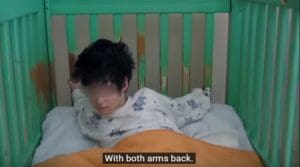
Many others had both hands and feet shackled to their beds, and were locked behind bars:
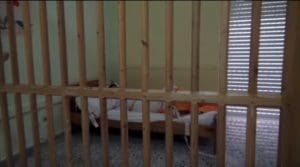
This child was shackled with their hands behind their back, and left on their stomach:
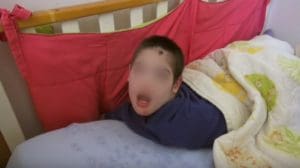
Countless children and young adults were kept in full cages and never allowed out, being fed through the bars at mealtimes.
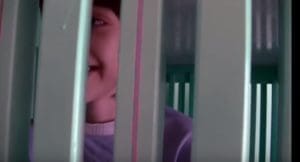
And one little girl lived in a room behind a locked glass door:
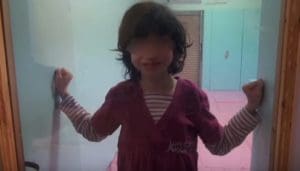
Entrenched attitudes
The staff were asked if they “go home feeling happy” and if conditions were “real life” for the disabled people. The staff said they couldn’t talk and were just employees. One staff member said: “I do have an opinion. I keep it to myself”. But one employee did speak to the activists, saying:
I’ve worked here for 27 years. What right do you have to be here? We’ve been here for 27 years taking care of these children. You should speak to the doctors, the scientists and the psychiatrists. When they tell you this child is going to harm himself, isn’t it a doctor’s decision? Should I not follow their orders?
It is this reliance on the opinion of doctors working at the centre which compounds the issues. A doctor who had been volunteering at Lechaina for over twenty years, George Gotis, said:
I believe this is one of the best institutions for disabled children not only [in] Greece but in Europe. Many of these profoundly disabled children have lasted far beyond their average life expectancy and these expensive caged beds, which were built to help protect them from injuring themselves, have played a big role in that.
The footage, the reactions of the staff, and the attitudes of doctors are all shocking. But perhaps more tragic is that this is not new. The appalling conditions that disabled children and young adults have to suffer in Lechaina have been reported on before.
A historic problem
As Human Rights Watch (HRW) documented in 2014, the Greek Human Rights Institute (HRI) published a damning report into the centre at Lechaina. It noted:
the degrading living conditions… the deprivation of care and support provided, the use of sedating medication, children being strapped to their beds, the use of wooden cage-beds for children with learning disabilities, the electronic surveillance, as well as the fact that such practices constitute violations of human rights.
The report also referred to the fact that there had been several deaths at the centre due to a lack of supervision. A 15-year-old died in 2006 after choking on an object he had accidentally swallowed. Ten months later when a 16-year-old died, the post-mortem examination revealed his stomach was full of pieces of fabric, thread and bandages.
Eva Cossé, a researcher at HRW, was commenting on a BBC World Service radio programme that had highlighted the appalling situation. She said:
Last Friday, the BBC reported on the horrific plight of children with disabilities living in the Children’s Care Center of Lechaina, in Southern Greece. It was not news to me.
In March 2011, the Greek Ombudsman’s Office published a damning report on the centre, noting an insufficient number of doctors and nurses, systematic sedation, and practices such as tying children… to their beds to reduce self-harm and the use of wooden cage beds due to staff shortages. Those with chronic diseases and disabilities in the centre did not receive adequate health care and most children weren’t receiving an education.
A lack of available places in other institutions or in community care means that residents remain in the care centre when they become adults and in most cases all their lives.
Following the report by Greece’s HRI, HRW wrote to both the Greek ministry of health and the UN. In 2012, the UN Committee on the Rights of the Child expressed “deep concern” about conditions at the centre and urged Greece to “take steps to ensure that no child with disabilities is treated inhumanely”. But as the BBC World Service report shows, this seemingly was ignored. As it was when the Emancipation Movement of People with Disabilities occupied the centre in November last year.
Are disabled people finally being listened to?
But after the UN committee on Human Rights published a scathing report, in December 2015, into Greek treatment of disabled people, things began to move forward. A programme of “deinstitutionalisation” has been launched by the Institute of Child’s Health, an arm of the Greek government. They will be working with the EU office of the UN High Commissioner for Human Rights and the charity Lumos. The first project will be at the centre in Lechaina. It is being done in three phases; the first was data-gathering work, which was completed in May. The second phase is intervention, where the residents will receive therapy that will prepare them for the third phase – actually moving out of the centre.
But the centre in Lechaina is just the tip of the iceberg. A report authored by the Roots Research Center for the charities Eurochild and Hope and Homes for Children UK highlighted the problem exists across the country. It found that there are 85 such centres in Greece, which house over 3,000 people in similar conditions; 800 of them being disabled children and young adults.
If Greece’s Syriza government is truly serious about tackling this appalling, systemic breach of human rights, then it needs to act more quickly. And it needs to be national. Because just a day more in the disgraceful conditions witnessed in Lechaina is one day too many for Greece’s disabled children.
Here is the video, by Emancipation Movement of People with Disabilities: “Zero Tolerance”, filmed in November 2015:
Get Involved!
– Support Emancipation Movement of People with Disabilities: “Zero Tolerance”.
– Donate to Hope and Homes for Children UK.
– Keep up to date with the situation in Lechaina.
Featured image via Κίνηση Χειραφέτησης ΑμεΑ

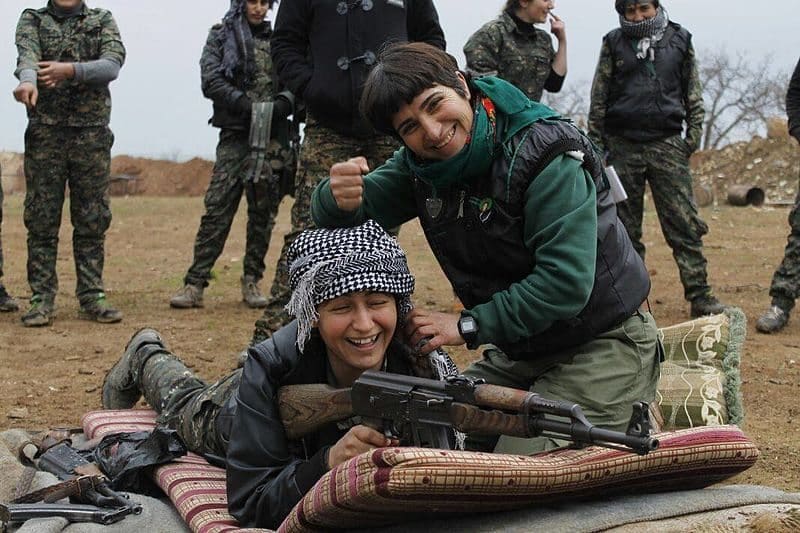
![UK residents can now stop Trump becoming the next President, and it’s so simple [OPINION]](https://www.thecanary.co/wp-content/uploads/2016/09/Trump.jpg)
![MPs should be on a zero-hours contract. Don’t turn up? Don’t get paid. [OPINION]](https://www.thecanary.co/wp-content/uploads/2016/09/green.jpg)
